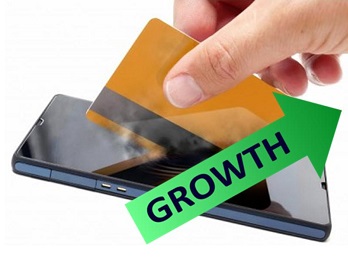The smartphone and consumer electronics manufacturer has now entered into the rapidly growing market.
In a market already rapidly filling up with Apple Pay, Android Pay and other large names of mobile payments options, LG has now unveiled its own option after having partnering with South Korean credit card companies KB Kookmin Card and Shinhan Card.
The companies have worked together to create a smartphone based payment system that will first launche in South Korea.
While the mobile payments service will be available exclusively in South Korea at its initial launch, it is unclear as to whether or not the service will move to an international market. At the moment, no date has been set for taking that kind of step outside the country.
There are currently many different types of technologies being used in order to complete payment transactions through the use of mobile devices. The two giants, Apple Pay and Android Pay, have both based their services on near field communication (NFC technology). At the same time, Samsung is using magnetic secure transmission (MST) that is comparable to the magnetic strip on a credit card.
LG mobile payments have not yet announced the type of technology that it will be using to complete transactions.
A growing number of retailers are starting to update their point of sale terminals in order to be more compatible with some of the top technologies being used for payments through mobile devices. It is likely that LG will choose a more established technology in order to ensure that it will be able to be compatible with the point of sale devices that are already in place now that its predecessors have paved the way for the use of mobile technology at the checkout counter.
The mobile payments space is one that has seen considerable controversy over the last few years as many believe in it, while others feel that it will never take off in the mainstream. A new study conducted by Research Now indicated that 51 percent of consumers would prefer to use a wallet app issued by their own financial institution as opposed to a third party such as Apple Pay, Android Pay or LG Pay. The next years will clearly be defining within this sector of the tech market.
BWild |
September 18, 2015
A recent study has forecasted that within a span of 7 years from now, the industry will reach $3 trillion.
The Bank of America Merrill Lynch has now released a report in which it has stated that in a period of 7 year, mobile payments will have grown by 200 times their previous size and will be worth more than $3 trillion.
If this prediction is correct, then wallet and banking apps, retailers, and telecoms are about to benefit greatly.
The report indicated that those who are most likely to benefit from this growth of mobile payments are: banking, telecom, IT, and mobile wallet firms. The report stated that “In India, we consider mobile payments to be both an opportunity (for banks, telcos and new players) and threat (due to dis-intermediation, more to the traditional banks). We estimate the value of mobile banking, estimated at just USD16 billion today to rise 200x in 7 years to more than USD 3,000 billion.”
It is also expected that mobile payments will make up 10 percent of the total transactions in that country.
 This is quite the increase, considering that for the 2015 financial year, smartphone payments made up only 0.1 percent of the total. The report stated that this will be a considerable opportunity for many companies involved in that industry to better their “competitive positioning.” Equally, the report noted that it would mean that there would suddenly be considerable competition making its way into the space that had previously been held by public sector banks.
This is quite the increase, considering that for the 2015 financial year, smartphone payments made up only 0.1 percent of the total. The report stated that this will be a considerable opportunity for many companies involved in that industry to better their “competitive positioning.” Equally, the report noted that it would mean that there would suddenly be considerable competition making its way into the space that had previously been held by public sector banks.
As the payments technology evolves, it is expected that the use of paper cash will have dropped to under 2 percent. The report predicted that the range of alternative methods of payment will lead to a gradual decrease in the use of cash throughout the economy, and that electronic payments will help to ease the lending rates and will encourage growth over time.
It pointed out that among the primary drivers behind the growth of the use of alternative transactions will be in the improvements of mobile payments through greater smartphone penetration. That penetration in India is expected to double in the country’s young population over the next three years. As 60 percent of the population is younger than 35 years old, this represents a massive shift in digital technology use.


 This is quite the increase, considering that for the 2015 financial year, smartphone payments made up only 0.1 percent of the total. The report stated that this will be a considerable opportunity for many companies involved in that industry to better their “competitive positioning.” Equally, the report noted that it would mean that there would suddenly be considerable competition making its way into the space that had previously been held by public sector banks.
This is quite the increase, considering that for the 2015 financial year, smartphone payments made up only 0.1 percent of the total. The report stated that this will be a considerable opportunity for many companies involved in that industry to better their “competitive positioning.” Equally, the report noted that it would mean that there would suddenly be considerable competition making its way into the space that had previously been held by public sector banks.